The best flashgun: the best strobe units for your camera
These are the best flashguns that attach to the hotshoe of your DSLR or mirrorless camera
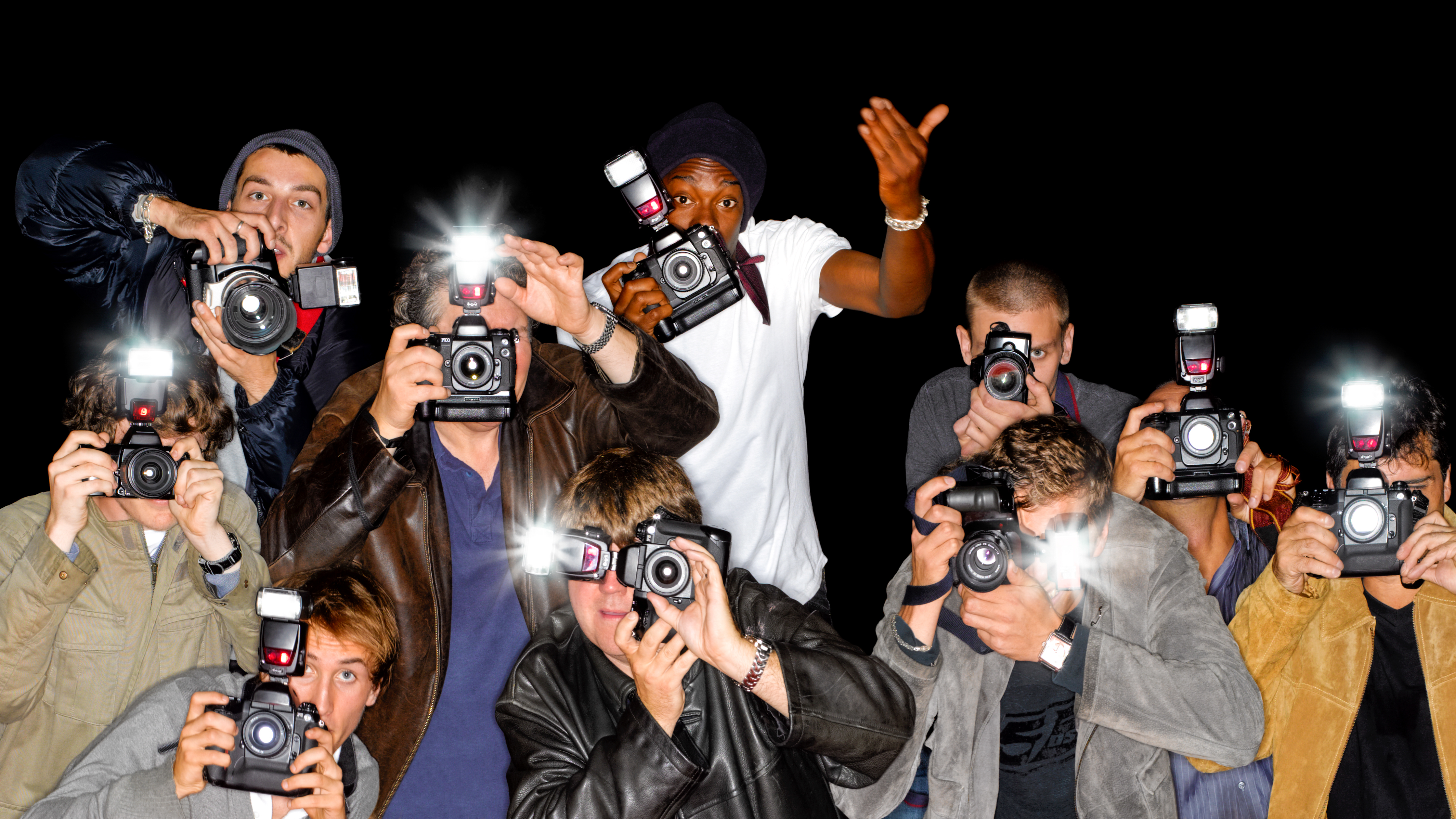
The best flashgun for your camera will put the built-in pop-up unit to shame, if it even has one. An external flashgun, Speedlite, Speedlight, or strobe (to name but a few catchwords) gives you massively more power and control.
So what features do you need? Automatic TTL (Through The Lens) flash metering enables easy use in all sorts of conditions. Bounce and swivel heads give you the option of reflecting light off ceilings and walls for a softer effect. Motorized zooms automatically track the focal length of your lens to extend your flash's reach when shooting at longer focal lengths. To varying extents, most flashguns also offer wireless connectivity, simplifying off-camera flash.
Pricier flashguns generally offer additional operating modes. You can expect slow-speed-sync and high-speed-sync as standard, as well as rear-curtain flash is also pretty much standard. More advanced options include a programmable stroboscopic mode, so you can capture the motion of an object at different steps throughout a long exposure.
Bear in mind, flashguns are not the only way to shine a light on your subject. You might like to consider the best LED panels too. These certainly don't match the raw power of a flashgun, especially when you’re competing with outdoor sunlight, but they do provide continuous ‘what you see is what you get’ lighting. At the other end of the scale, you may need more flash power than any of these flashguns can provide, so you’d need to look at some of the best lighting kits for professional studio or location photography.
The Quick List
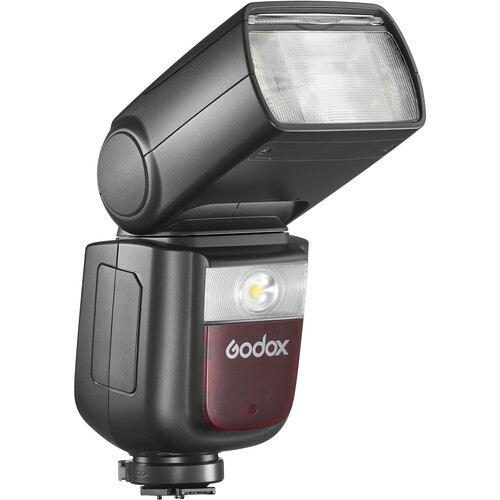
No matter what camera system you have this is the best flashgun option for all of them. Powerful and versatile, but also affordable, the Godox V860III ticks all the boxes.
Read more
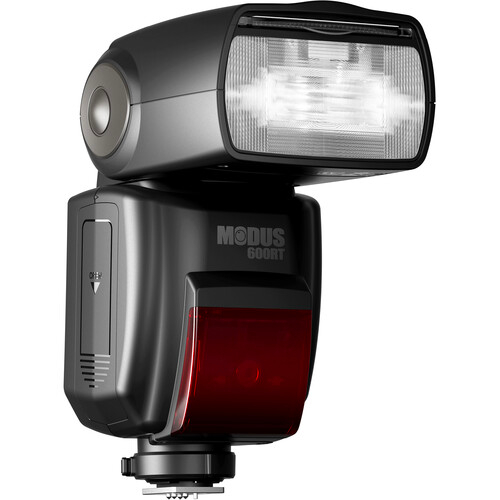
The Hahnel Modus 600RT Mk II rivals the best from the big manufacturers, both in functionality and build quality, while undercutting on price.
Read more
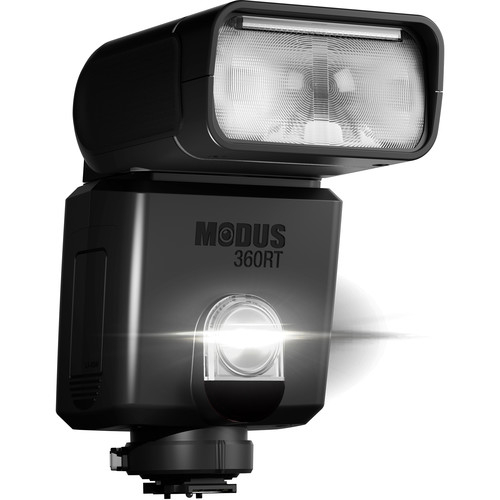
If you want a rechargeable battery in a very compact form, then look no further than the Hahnel Modus 360RT which offers just that, although at a slightly reduced power output. Read more
The best flashgun or strobe
Why you can trust Digital Camera World
Best flashgun overall
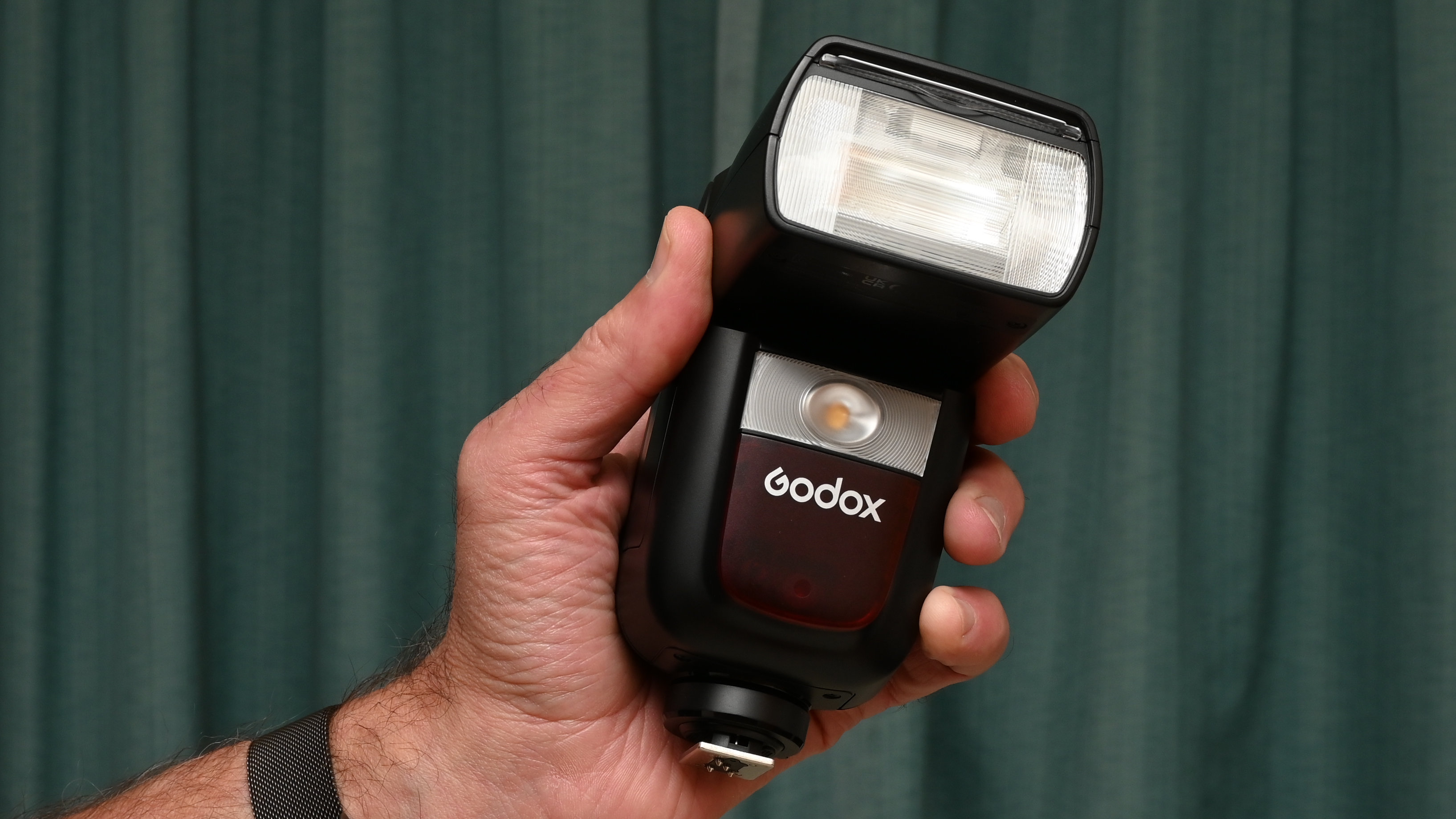
1. Godox VING V860III
Our expert review:
Specifications
Reasons to buy
Reasons to avoid
✅ Battery Performance: Li-ion battery pack allows for around 500 full-power flashes per charge.
✅ Wireless Functionality: Built-in RF transceiver supports wireless master/slave operation up to 100m/330ft.
❌ No Weather-Sealing: Lacks weather protection, making it vulnerable in harsh conditions.
❌ Outdated Control Panel: The interface feels dated compared to newer models.
Better, faster, more! This is currently our favorite flashgun in dedicated TTL options to suit Canon, Nikon, Sony, Fujifilm, Olympus, Panasonic, and Pentax cameras. It runs on a Li-ion battery pack which can power you through around 500 full-power flashes on a single charge, with super-fast recycling speeds between flashes. And full-power flashes are mighty too, rated at Gn 60 (ISO 100, meters) at the long end of the zoom range. We love that its built-in RF transceiver offers wireless master/slave operation over as much as 100m/330ft, while it’s inexpensive enough to make multiple flashgun setups truly affordable. It works great with the Godox XPro RF trigger, sold separately, and we also like that the full range of flash modes includes programmable strobe (multi-flash) output.
We find that the secondary LED lamp with its 10-step power range is great for close-up stills and video, as well as offering modeling and AF-assist functions, the latter working for mirrorless cameras instead of the red AF-assist beam for DSLRs. The motorized zoom and bounce ranges are generous, at 20-200mm and -7 to 120 degrees respectively. We think the only room for improvement is that the control panel feels a little dated and it lacks any weather-seals. Even so, you can’t buy better at the price. Also consider the Godox V1, which is essentially the same flashgun but with a larger, circular head.
Read our full Godox VING V860III review for more information.
Best alternative overall flashgun
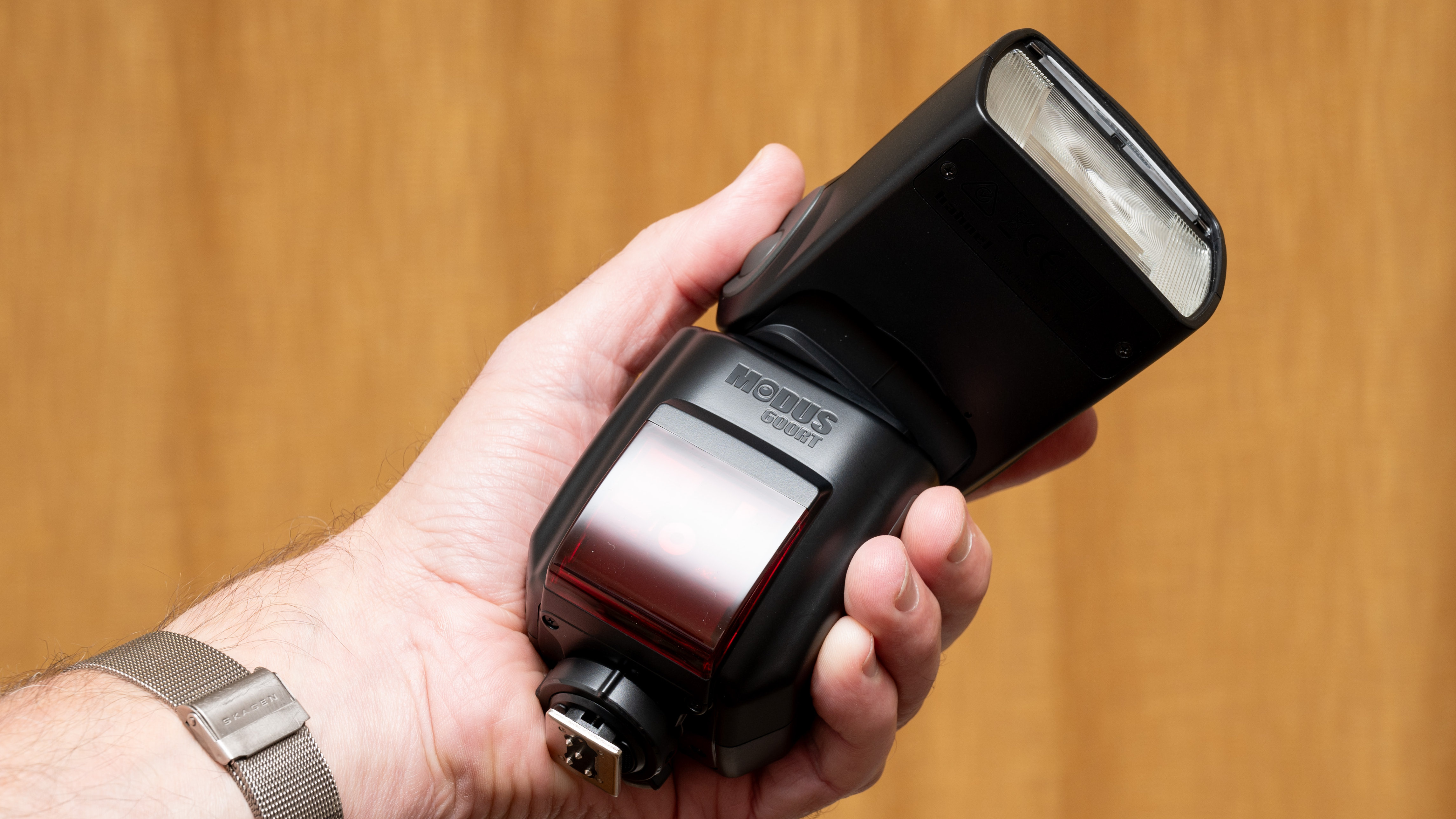
2. Hahnel Modus 600RT Mk II
Our expert review:
Specifications
Reasons to buy
Reasons to avoid
✅ Competitive Features: Matches or exceeds features found in camera manufacturers' flagship models but at a lower price point.
✅ Rechargeable Li-ion Battery: Provides up to 550 full-power flashes on a single charge, more stamina than AA batteries.
❌ Higher Price: More expensive than the Godox VING V860III, which offers many similar features.
❌ Costly Spare Batteries: Additional Li-ion batteries are priced at around $60/£50, which may add to the cost of ownership.
We’ve long been impressed by the Hahnel Modus 600RT Mk II. It matches or beats the features of camera manufacturers’ own-brand flagship models, but at a fraction of the price. Even so, it’s a fair bit more expensive than the Godox VING V860III. On the other hand, we like the flexibility of being able to buy it in different kit options, either as the flashgun on its own, or as a wireless kit that includes a hot shoe mounting Viper RF (Radio Frequency) transmitter, as a ‘pro’ kit that comprises two flashguns and a Viper trigger, enabling the versatility of dual-flash lighting setups. Advanced flash modes include high-speed sync and programmable repeat (stroboscopic) options, and wireless RF master/slave operation has a long range of up to 100m/330ft.
We like that the flashgun is powered by a rechargeable Li-ion battery pack, instead of the usual four AA batteries (and this can be charged in the unit via USB). This gives far greater stamina, of up to 550 full-power flashes between recharging, along with very fast recycling speeds of 1.5 seconds after a full-power flash and just 0.7 seconds after a half-power flash. The only catch is that additional batteries (should you want any) cost around $60/£50.
Read our full Hahnel Modus 600RT Mk II review for more information.
Best compact Li-ion flashgun
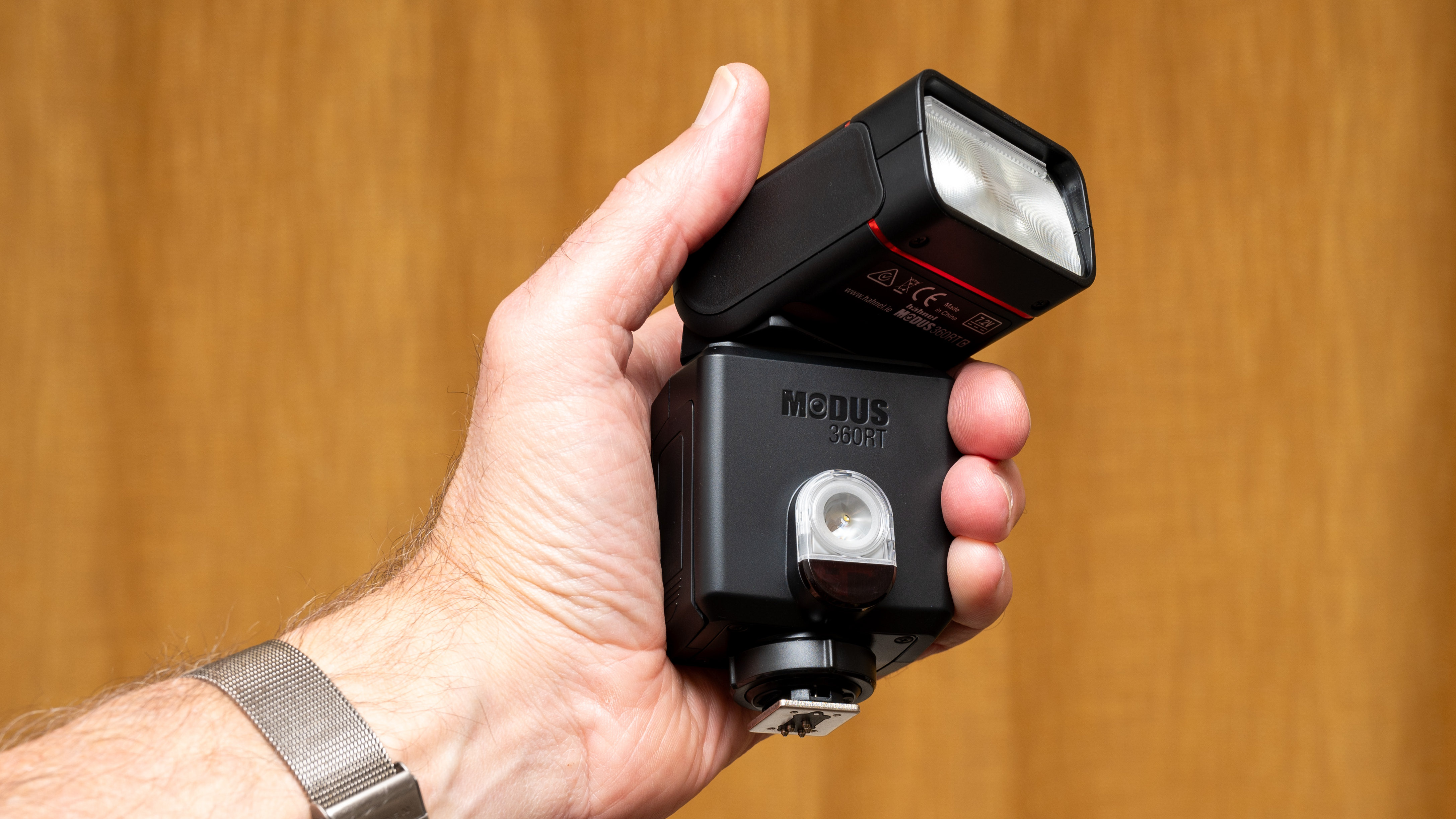
3. Hahnel Modus 360RT
Our expert review:
Specifications
Reasons to buy
Reasons to avoid
✅ Fast Recycling: Quick recycle time of 1.6 seconds even after a full-power flash.
✅ Built-in RF Transceiver: Provides reliable off-camera triggering with a long range, just like its larger counterpart.
❌ Restricted Swivel Range: Swivels 180 degrees to the right but only 90 degrees to the left, limiting flexibility in some shooting angles.
❌ Lower Maximum Power Output: Limited power compared to larger models, making it less effective in situations with high ceilings or distant walls when using bounce or swivel flash.
For slimline, lightweight mirrorless cameras and small DSLRs, we find this compact flashgun a better fit than the full-blown Hahnel Modus 600RT Mk II. It certainly gives a less top-heavy camera and lens combo. Even so, the 360RT certainly isn’t lacking in features. Just like with its bigger sibling, we love the built-in RF transceiver for reliable off-camera triggering over a long range, its albeit downsized Li-ion battery pack, and its full range of flash modes, including programmable stroboscopic output. It even has a secondary LED lamp (missing in the 600RT Mk II), which you can use for AF-assist, modeling and close-range stills and video shooting, complete with adjustable power levels.
One area of downsizing that we’re not so keen on is that the maximum power output of the flash is relatively limited, and we struggled a bit with bounce and swivel flash with really high ceilings and relatively distant walls. And although you get a full 180-degree swivel to the right, there’s only 90 degrees to the left. Even so, it’s a very capable flashgun that’s very keenly priced, and recycling speed is fast even after a full-power flash, at 1.6 seconds.
Read our full Hahnel Modus 360RT review for more information.
Best universal flashgun for pros
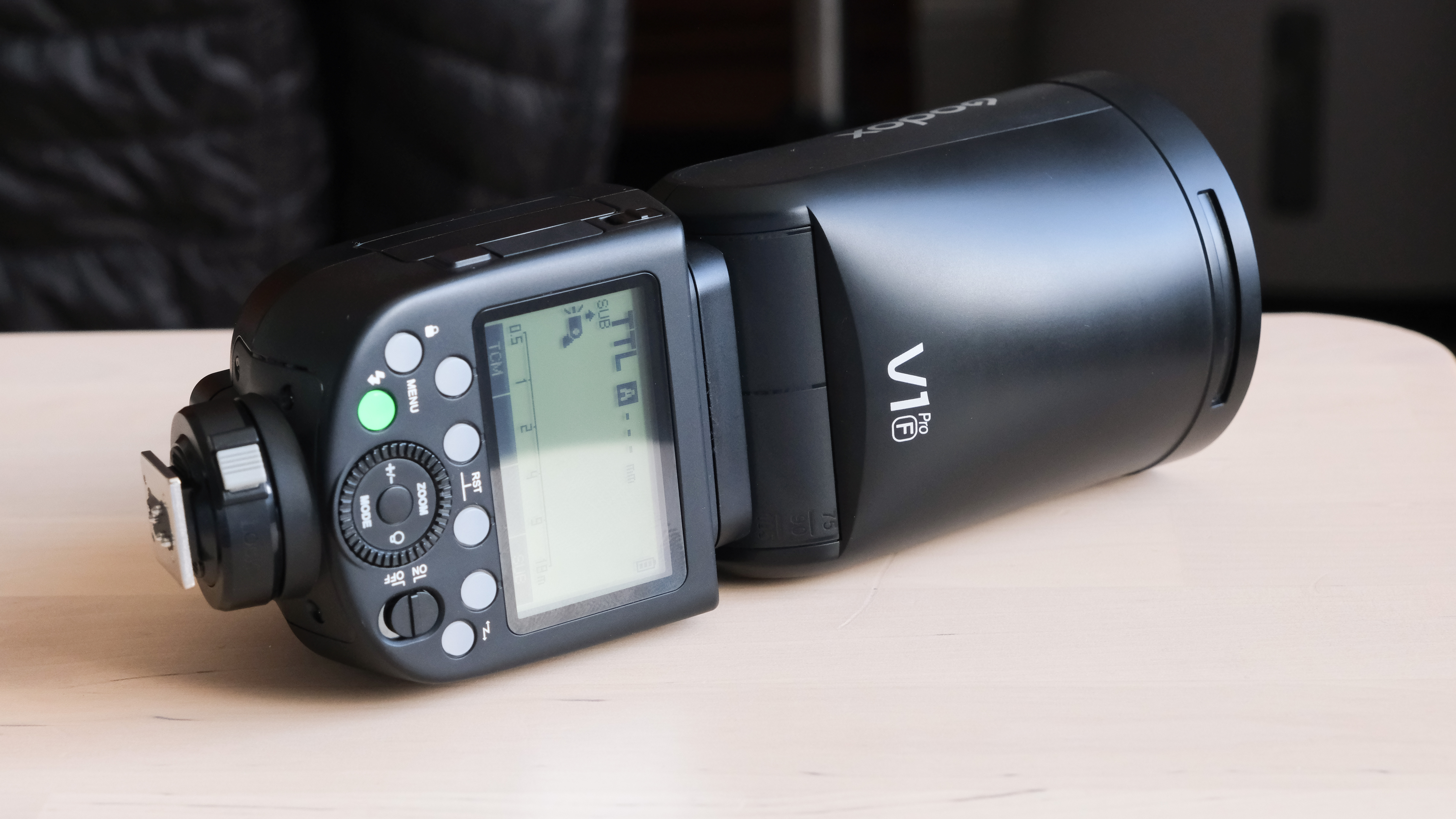
4. Godox V1Pro
Our expert review:
Specifications
Reasons to buy
Reasons to avoid
✅ USB-C Charging: Convenient battery charging via USB-C eliminates the need for extra charging blocks, enhancing portability and ease of use.
✅ Powerful and Consistent Output: Delivers reliable, powerful flashes suitable for portrait, event, and wedding photography.
❌ Clip-On Fill Light: The much-touted fill light feature feels more gimmicky than practical and may not produce the desired results for all photographers, particularly for those who avoid direct flash.
❌Limited Use for Continuous Shots: The ability to shoot 100 continuous full-power flashes might be overkill for some users, particularly those who don’t shoot at such high volumes.
The Godox V1Pro is an upgrade to the successful Godox V1 flashgun, and introduces some interesting new features. However, these come with a higher price tag, and whether the additional cost is justified largely depends on your photography style.
My favorite feature is the new USB-C battery charging feature which I appreciate is not the most exciting of innovations, but it is a big quality-of-life improvement and frees me from carrying another charging block. The much-touted clip-on fill light however seemed more gimmicky than practical to my own work. I don't like direct flash, and the clip-on unit gave my photos a cheap ‘flash photography’ look which I wasn’t fond of, although other photographers may wholly disagree. The other major feature, the ability to take 100 continuous shots at full power, is impressive but not something I would frequently use as that adds up to more flashes than I can conceive needing. However professionals with a higher rate of shooting might find this more beneficial.
Despite these points, it’s undeniable that this is an exceptional flash. The consistency of the flash is top-notch, the power is more than sufficient for portrait, event, and wedding photography, and Godox’s wireless system is superb.
But then again, the standard V1 also possesses all these features and meets my needs perfectly, and I don’t find enough compelling features in the Pro version to justify paying about a third more than the regular V1, so I would recommend checking that out as well before you buy the V1Pro.
Read our full Godox V1Pro review for more information.
Best Canon mid-range flashgun
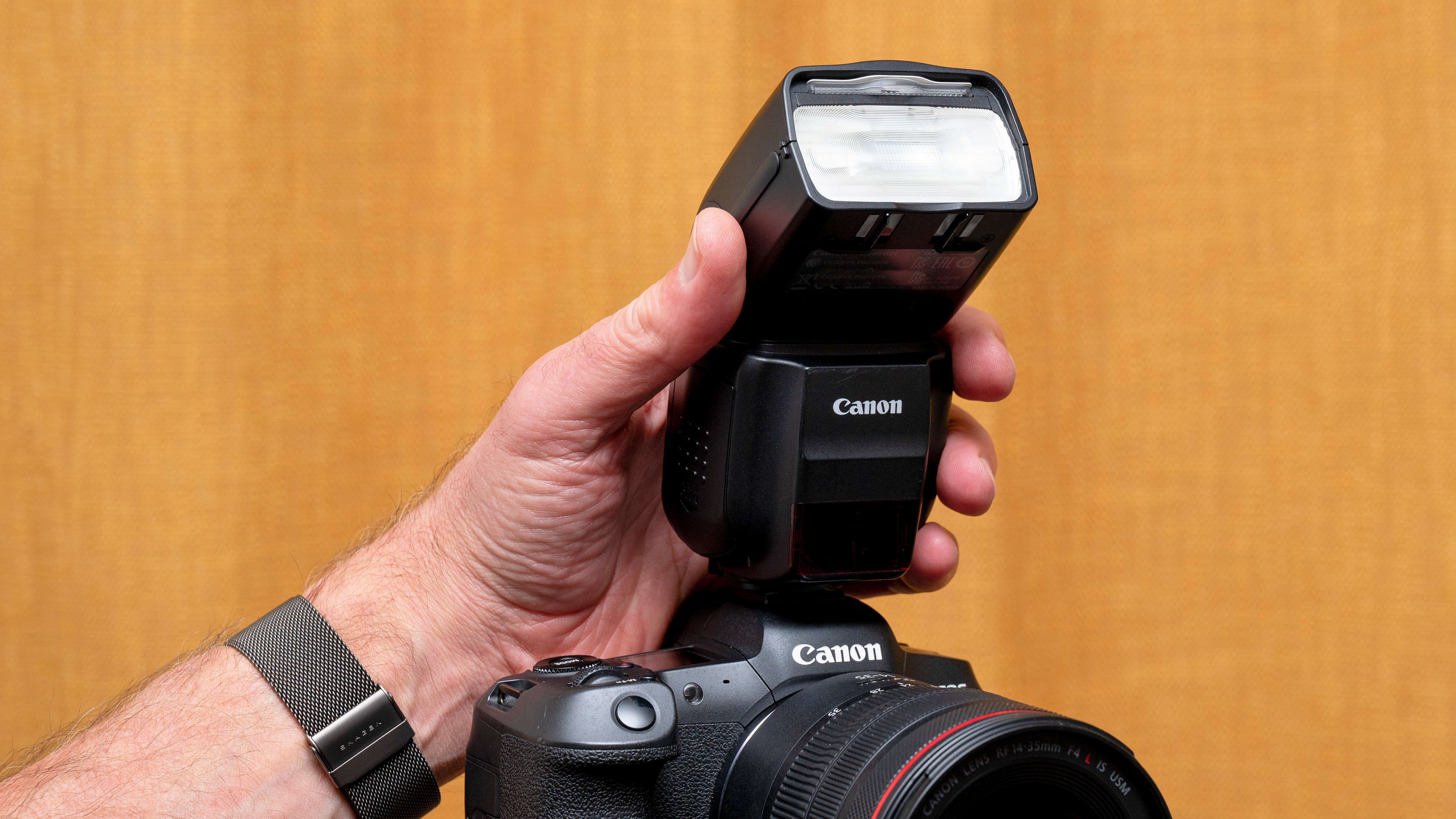
5. Canon Speedlite 430EX III-RT
Our expert review:
Specifications
Reasons to buy
Reasons to avoid
✅ Good for bounce flash: Powerful enough to bounce light off high ceilings.
✅ Motorized zoom head: Covers a versatile range of 24-105mm, with 150° swivel to the left and 180° to the right.
❌ No stroboscopic mode: Missing a feature found in some competing models
❌ No infrared wireless master mode: Can’t function as an infrared master, limiting flexibility in non-RF setups.
We like that the Mark III edition of Canon’s Speedlite 430EX inherits a respectable maximum power rating of GN 43m (at ISO 100) and a motorized 24-105mm zoom head with 150 and 180 degrees of swivel, to the left and right, respectively. We’re more impressed that its on-board controls are redesigned to be more intuitive, and that build quality is very good, albeit without the weather-sealed construction of Canon’s more pro-grade Speedlites. High-speed sync and rear-curtain flash modes are supported, but we’re less impressed that there’s no stroboscopic repeat mode.
Along with simplified controls and a cleaner layout, the Mark III also adds RF (Radio Frequency) triggering that was lacking in the previous iteration. We’re pleased that we can use the flashgun as a wireless master or slave with other Canon RF-compatible flashguns, although it lacks an infrared wireless master mode. Further bonuses of RF linking are that the off-camera range is boosted from 10m to 30m, and triggering is more reliable in bright daylight. TTL flash metering accuracy is spot-on, and maximum output is good enough for bouncing the flash of high ceilings. In our tests, we found that recycling speeds after a full-power flash was 2.4 seconds with NiMH batteries and 3.4 seconds with alkaline cells. That’s not bad for an AA battery-powered flashgun but can’t compete with Li-ion based models.
Read our full Canon Speedlite 430EX III-RT review for more information.
Best Nikon mid-range flashgun
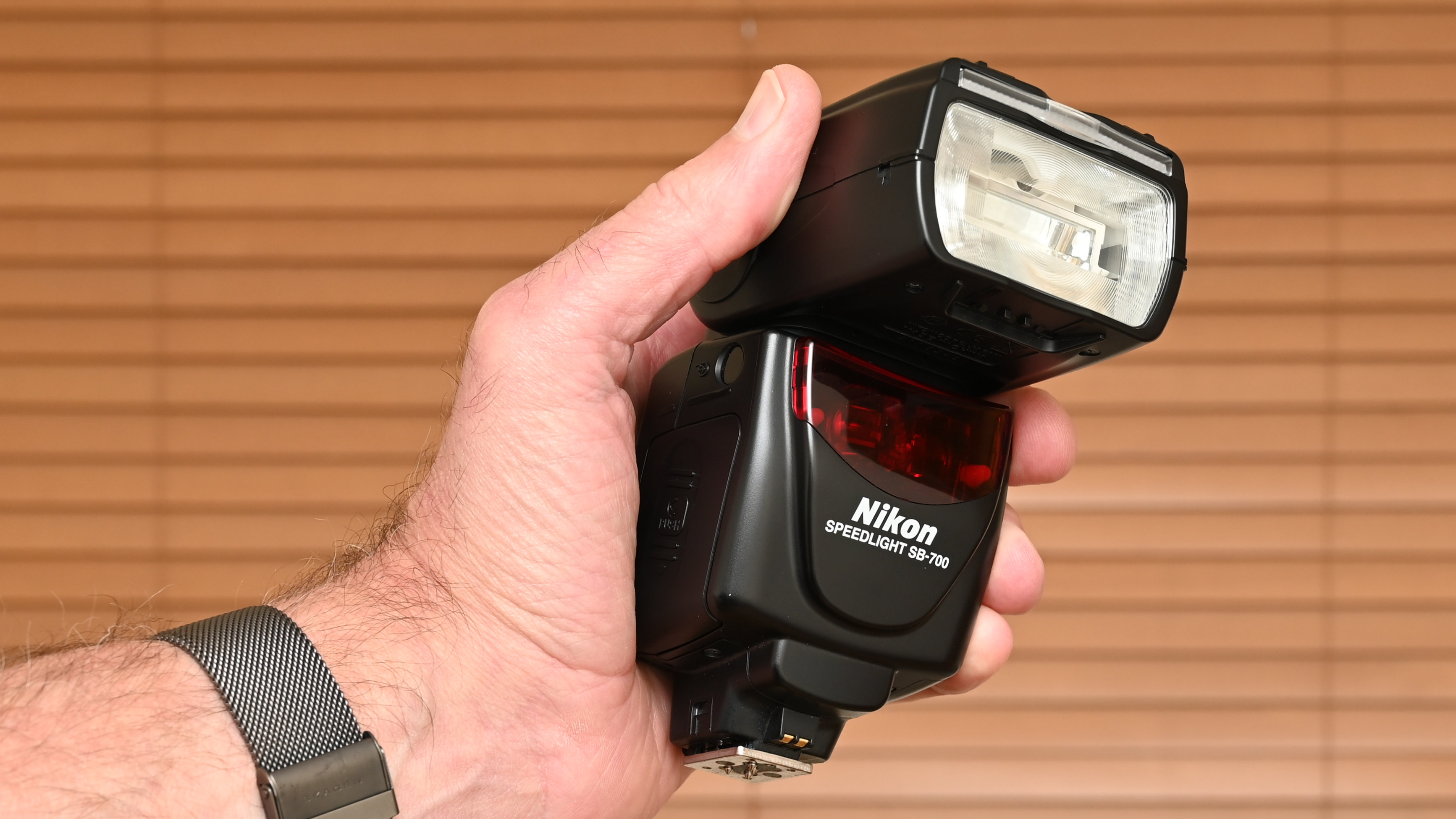
6. Nikon Speedlight SB-700
Our expert review:
Specifications
Reasons to buy
Reasons to avoid
✅ Full master and slave wireless functions: Offers flexibility, though infrared-based rather than RF.
✅ Included accessories: Comes with useful accessories, like a diffusion dome and color-matching filters for tungsten and fluorescent lighting.
❌ Switching between TTL modes: Switching from TTL-BL (Balanced Light) to regular TTL requires changing the host camera’s metering mode to spot metering, which can be cumbersome.
❌ No RF connectivity: Wireless functionality is limited to infrared rather than RF, which can reduce range and reliability in certain conditions.
We think this is the best buy in Nikon’s own-brand Speedlight range, taking performance and cost into consideration. The SB-700 is the company’s mid-range offering, and we like the full master and slave wireless functions, even if they only come in infrared flavor rather than RF connectivity. We love the range of three alternative illumination patterns, that the head has downward as well as upward tilt, and a full 180-degree swivel in both directions.
We find the 24-120mm zoom range pretty good, and we like the smart range of supplied accessories, which include a diffusion dome and color-matching filters for both tungsten and fluorescent lighting. On-board controls are easy to operate, thanks to an intuitive interface. We’re not so keen on the fact that you can only switch from Nikon’s TTL-BL (Balanced Light) flash metering mode to regular TTL by changing the host camera’s main metering mode to spot metering. The power rating of Gn 38 (meters, ISO 100) is adequate rather than generous and recycling is typically pedestrian for a flashgun that runs on AA batteries, measuring 2.7 or 5.4 seconds in out tests, using NiMH and alkaline batteries respectively.
Read our full Nikon Speedlight SB-700 review for more information.
Best Nikon budget flashgun
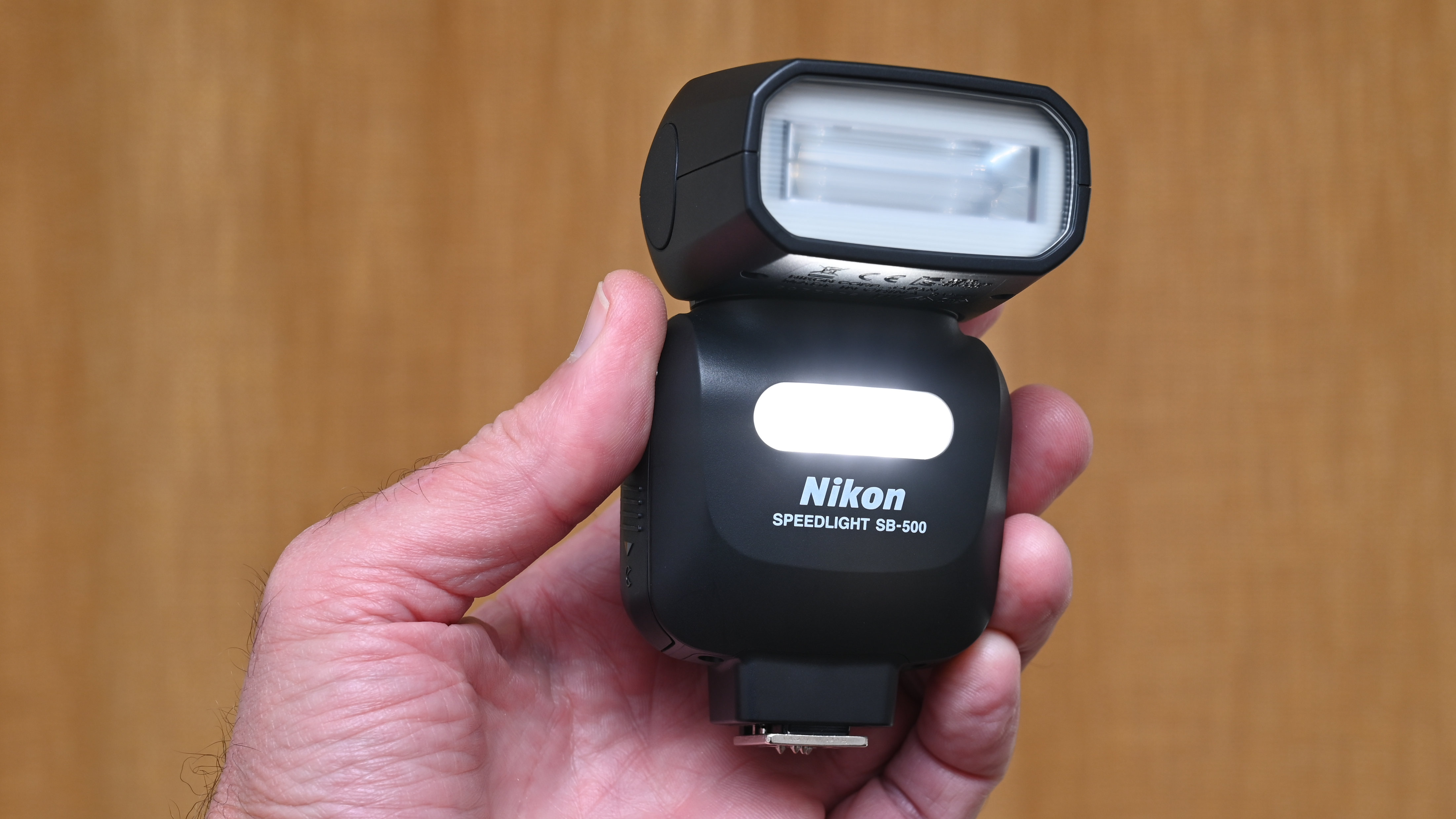
7. Nikon Speedlight SB-500
Our expert review:
Specifications
Reasons to buy
Reasons to avoid
✅ Secondary LED lamp: Provides daylight-balanced constant lighting, useful for video or continuous light situations, with a beam angle equivalent to 24mm focal length on full-frame.
✅ Nikon Creative Lighting System compatibility: Works with Nikon's system, offering infrared commander/slave modes, though Commander mode is limited to newer cameras.
❌ Pricey for what it offers: Despite its simplicity, the price doesn’t reflect the lack of advanced features, making it less cost-effective for some users.
❌ Slow recycling times: Recycle speeds are slower, at 4.6 seconds with NiMH batteries and 6.8 seconds with alkaline, partly due to the two AA battery power source.
If you like to keep things simple, this flashgun covers the basics but little else. We like that it’s small enough to slip into a coat pocket, and has a lightweight build, running on just two AA batteries. Considering that it’s pretty pricey to buy, we’re unimpressed by the lack of a zoom facility, with neither manual nor motorized extension. Similarly, there’s no rear info screen and only a very rudimentary set of controls. There’s also no wide-angle diffuser panel nor a flip-out catchlight card.
On the plus side, the SB-500 is compatible with the Nikon Creative Lighting System, featuring infrared commander/slave modes, although the Commander mode only works with fairly recent cameras. We also like the secondary LED lamp for constant lighting, which is daylight-balanced and has the same 24mm focal length equivalent beam angle as the main flash tube (in full-frame terms). Maximum flash power is rather modest and, not helped by running on two rather than four AA batteries, recycle speeds after a full-power flash is on the slow side, at 4.6 seconds for NiMH and 6.8 seconds with alkaline cells. Ultimately, it’s a good choice if you want a small, simple, and convenient flashgun, rather than something that’s more powerful and versatile.
Read our full Nikon Speedlight SB-500 review for more information.
Best Canon professional flashgun
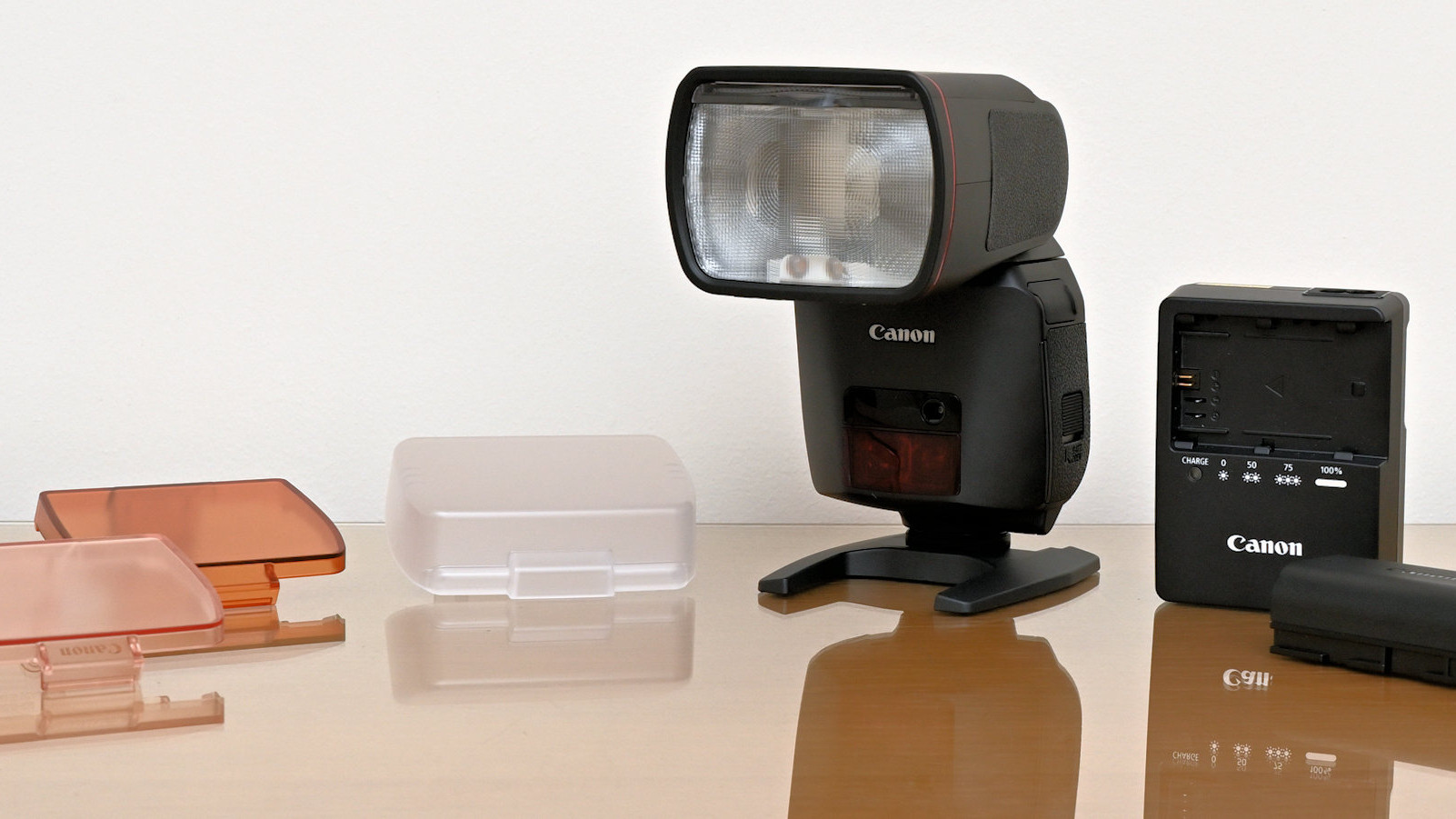
8. Canon Speedlite EL-1
Our expert review:
Specifications
Reasons to buy
Reasons to avoid
✅ Premium build quality: Features Canon’s ‘red ring,’ signifying its flagship status, with an L-series level of durability.
✅ Cooling system: Internal, fan-driven cooling allows for up to 170 full-power shots in succession without overheating, ideal for high-demand situations like fashion photography.
❌ Price: Extremely expensive, costing more than five times as much as some competitive models like the Godox VING V860III, making it less accessible to non-professional users.
❌ Heavy and bulky: Its professional-grade design and advanced features make it larger and heavier than many other flashguns, which could be cumbersome for extended handheld use.
We love the quality feel of the Speedlite EL-1, Canon's flagship flashgun, designed for high-end professional use. As such, it's the first Speedlite to carry the famous Canon ‘red ring’, normally associated with L-series lenses. The EL-1 is built for endurance and dependability, with a weather-resistant design that uses sealing similar to that on top Canon cameras. We found it reassuring that we could shoot in any weather without worrying about raindrops causing havoc with high-voltage flash electronics. With its Li-ion battery pack, we found the flashgun kept going for around 330 full-power flashes, along with super-fast recycling speeds of just under a second.
For fashion photography or any other scenario when you need to keep on shooting with high-power flash settings for long periods, we’re fans of the internal, fan-driven cooling system, which enables up to 170 full-power shots in quick succession without overheating. That goes well with the specially designed Xenon flash tube, increasing durability, accuracy and consistency, while offering manual power settings right down to 1/8192 power – a particular challenge for flashgun technology. As you’d expect, it boasts a full range of flash modes including a programmable strobe, a red AF-assist lamp plus an LED lamp, and full RF and infrared wireless master/slave modes. The only real sticking point is the price. It’s a bit rich for our liking, costing more than five times as much as the Godox VING V860III.
Read our full Canon Speedlite EL-1 review for more information.
Best Nikon professional flashgun
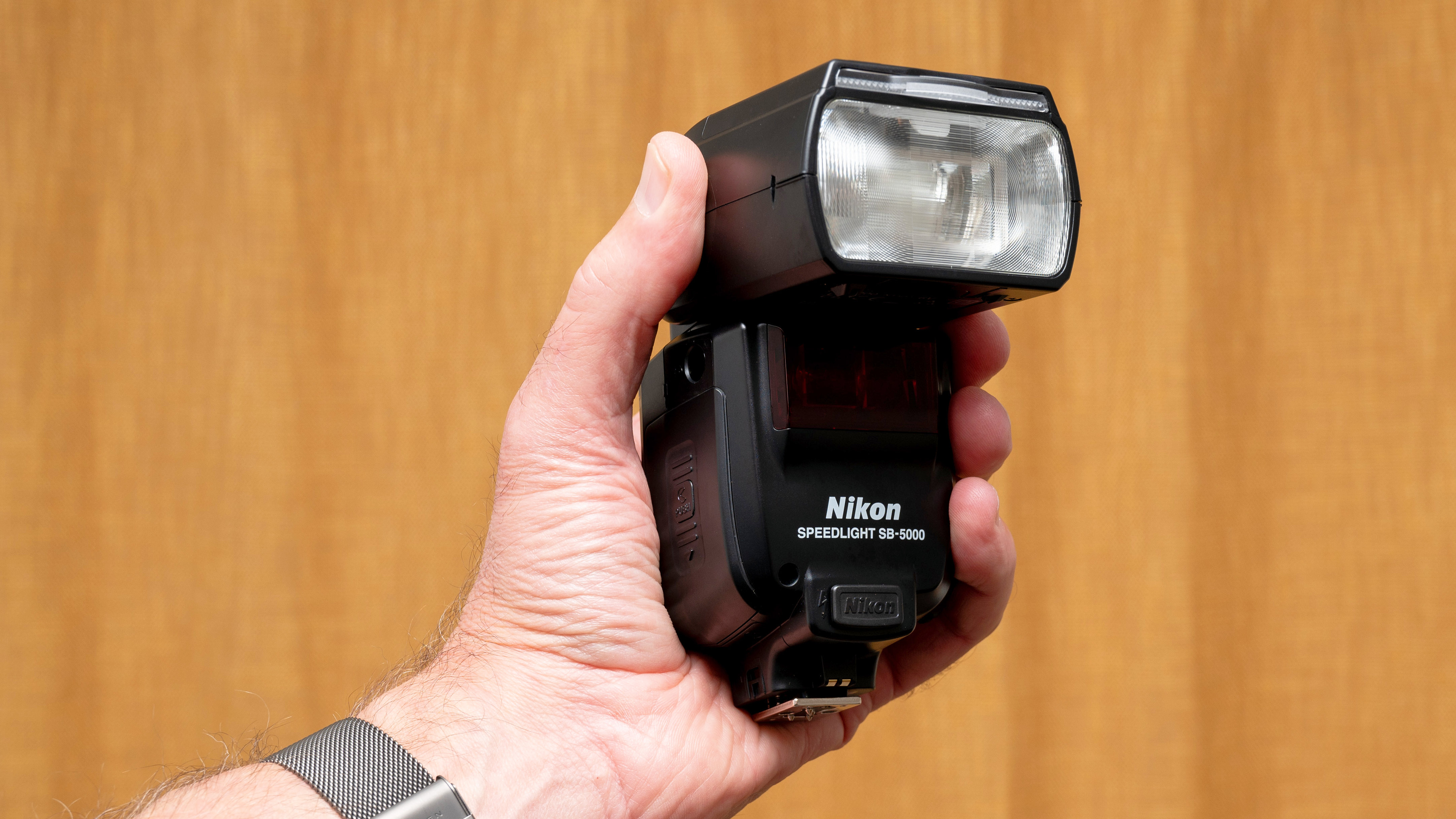
9. Nikon Speedlight SB-5000
Our expert review:
Specifications
Reasons to buy
Reasons to avoid
✅ Extended zoom range: 24-200mm motorized zoom range provides versatile lighting options.
✅ External power pack option: Supports extended shooting with the ability to connect an external power source.
❌ Additional costs for RF use: To utilize RF with multiple flashguns, users must buy the WR-R10 transceiver and potentially the WR-A10 adapter, adding significant expense (up to £165/$200).
❌ Less effective in harsh conditions: Although it offers cooling for performance, the overall weather resistance may not match that of higher-end options, limiting its use in extreme environments.
The Nikon Speedlight SB-5000, replaces the SB-910 as the company’s flagship model. Upgrades that we love over the SB-700 are the more powerful GN of 55m power rating (at 200mm, which changes to 34.5mm at 35mm), as well as a longer 24-200mm motorized zoom range, a programmable strobe/repeat flash mode. We particularly like the easy, on-board selection of TTL and TTL-BL modes, and the option of using an external power pack. It's also good that the new integral cooling system enables quick-fire shooting for 100 or more shots, even at full output power.
Nikon has taken a leaf out of Canon’s book and incorporated RF wireless communication as well as infrared into the unit, although it’s not so well implemented. Whereas the Canon 600EX II-RT features an RF transceiver, the SB-5000 only has a receiver and can’t work as a master. To use multiple flashguns with RF, you’ll need the WR-R10 transceiver, plus a WR-A10 adaptor if your camera has a 10-pin port, adding as much as £165/$200. Continuous shooting stamina aside, the main performance boost over the SB-700 is in maximum output power. TTL accuracy and recycling speeds are excellent, the latter being further enhanced when using the optional, external power pack, which takes eight AA batteries.
Read our full Nikon Speedlight SB-5000 review for more information.
How we test flashguns
We test all available features for each flashgun that goes through our labs. To test power output, we used a Sekonic flash meter placed at a distance of one meter from each flashgun. We check the complete range of manual power settings, in one-stop increments. Based on a sensitivity of ISO 100, the figures correlate directly with the Gn (Guide number). The results are double-checked by taking shots of a gray card with the appropriate lens apertures and using the camera’s histogram display in playback mode. This is done for flash zoom settings of 24mm, 50mm, and 105mm (in full-frame terms), where available.
We also check the accuracy and consistency of electronic/intelligent TTL (Through The Lens) flash metering, and the speed with which each flashgun can recycle to a state of readiness after a full-power flash, using both Ni-MH and alkaline cells, or a Li-ion power pack where supplied.
For more information on how we test photographic equipment, click here.
Flashguns: Jargon Buster
There’s a lot of jargon associated with flashguns, some of which can be daunting for the uninitiated. Here’s an explanation of the various terms and acronyms, to make light of the situation, so to speak...
AF-assist
You might well use a flashgun in very dull or dark lighting conditions. Traditionally, a red AF-assist beam will give the camera’s autofocus system something to lock on to. However, this doesn’t work with mirrorless cameras, which often feature a built-in AF-assist lamp.
Battery type
Most conventional flashguns run on either two or four AA batteries. Rechargeable AA batteries using NiMH (nickel metal hydride) cells tend to enable more flashes and faster recycling times, especially after high-power flashes, compared with alkaline batteries. Some of the latest flashguns run on rechargeable Li-ion battery packs, enabling a greater number of flashes and even faster recycling speeds.
Bounce and swivel
A bounce and swivel head lets you bounce the light off ceilings and walls, for a softer and more natural-looking lighting effect. Typically, you’ll get 0-90 degrees of vertical bounce and up to 180 degrees of lateral swivel in both directions, to the left and right. Some flashguns offer more generous vertical bounce, from slightly downward for extreme close-ups to slightly rear-facing. For the latter, you can also swivel the head through 180 degrees and then apply vertical bounce.
Catchlight card
This is a small white card that pulls out from the front of the main flash tube, where featured. It enables some forward-facing light when using the flashgun in bounce mode, to fill in shadows and give catchlights in the eyes when taking portraits.
Color filters
Some flashguns are supplied with clip-on color filter panels. Where featured, two are usually included, for balancing the color temperature of the flash with either tungsten or fluorescent ambient lighting. When fitted, the flashgun often conveys information to the host camera so that the appropriate white balance setting can be selected automatically.
Dedication
A dedicated flashgun is designed to work with a specific make of camera, typically enabling TTL (Through The Lens) automatic flash exposure settings for varying lighting conditions and different subject distances. It also allows various flashgun settings to be applied directly from the camera.
Diffusion dome
This is a translucent white plastic dome that fits over the front of the flashgun’s light tube. It gives a softer lighting effect and enables some forward-facing direct flash in addition to flash bounced off walls and ceilings. You’ll typically use it with around a 45-degree vertical bounce angle.
Diffusion panel
Many flashguns feature a diffusion panel that pulls out from the front of the flash tube and swings down with a spring-loaded action. It gives a wider beam angle, to cover the field of view when using a wide-angle lens.
e-TTL
Canon’s e-TTL system for ‘evaluative Through The Lens’ flash metering uses a pre-flash to automatically work out the correct flash intensity for any given subject distance and ambient lighting conditions. It’s since been replaced by e-TTL II, an updated version featured in Canon’s current flashguns.
Gn (Guide number)
The maximum power output (light intensity) of a flashgun is usually quoted as a Gn (Guide number). It’s generally quoted at the maximum zoom setting of the flashgun, where power output is at its greatest due to the relatively narrow beam angle, and tends to be given in meters and/or feet using a camera sensitivity of ISO 100.
i-TTL
Nikon uses i-TTL (intelligent Through The Lens) flash metering to work out the required flash power for shooting at any given subject distance and lighting conditions, to gain a ‘correct’ exposure. The flashgun fires a number of pre-flash pulses to make the calculation.
i-TTL BL
This is the default flash metering mode for current and recent Nikon flashguns. It stands for i-TTL Balance Light, and takes ambient lighting more into account than regular i-TTL mode, for a more natural overall look.
Illumination pattern
Some Nikon flashguns offer different illumination patterns, either giving wide and even-looking coverage, a more regular angle, or a tighter angle to concentrate the light in the central region of the image frame.
HSS (Auto FP)
The HSS (High-Speed Sync) mode offered by many flashguns enables you to use the flash at a faster shutter speed than the regular sync speed, which usually tops out at around 1/200th of a second. Also called ‘Auto FP’ mode by Nikon, this enables you to use flash at super-fast shutter speeds, albeit with a reduction in maximum flash power.
LED lamp
Some flashguns include a secondary LED lamp. It usually comes with an adjustable output brightness. It’s useful for close-ups stills and video, as well as for use as a modeling lamp (to preview the effect of flash). You can also use it as an AF-assist lamp, useful with mirrorless cameras that can’t use a flashgun’s red AF-assist beam.
Red-eye reduction
This is a flash mode that fires a number of pre-flash pulses to narrow the pupils of the eyes when taking portraits. It reduces the effect of people appearing to have red pupils caused by the flash bouncing off the insides of their eyes.
Rear-curtain sync
With rear-curtain sync, the flash is fired at the end of the exposure rather than at the beginning. It can be useful when capturing light trails from vehicles with long exposures, as the light trails will appear to stretch out behind the vehicle in a natural manner, rather than in front of the vehicle.
Slow sync
Slow sync is a mode for combining flash with long exposures. It’s good for scenarios like night-time portraits, where you might want to photograph somebody set against the lights of a cityscape.
Stroboscopic mode
A programmable stroboscopic mode enables you to automatically fire a number of flashes at a preset interval, throughout a long exposure. This gives you the chance to freeze an object in motion at various stages through its path of movement.
Wireless modes
For using a flashgun off-camera, or in setups with multiple flashguns, one flashgun is configured as the master or commander, the others are set to slave mode. The most basic wireless linkage is the ‘optical’ mode, which senses the light from the main flash (pre-flash pulses in TTL mode can often be ignored). Infrared linking is more advanced, enabling TTL and other options, but works over a fairly limited distance. Wireless RF (Radio Frequency) linking is best, as it’s more reliable, especially in daylight conditions, doesn’t require a ‘line of sight’ so you don’t have to worry about obstacles, and often works over a range of up to 100 meters.
Zoom
Most flashguns feature a zoom head. It’s generally motorized in dedicated flashguns, so the zoom setting of the flashgun can be automatically matched to the focal length or zoom setting of the lens mounted on the camera. A zoom range of 24-105mm (in full-frame terms) is common, whereas some flashguns offer a more generous zoom range of up to 20-200mm, giving greater wide-angle and telephoto potential.
Get the Digital Camera World Newsletter
The best camera deals, reviews, product advice, and unmissable photography news, direct to your inbox!
Matthew Richards is a photographer and journalist who has spent years using and reviewing all manner of photo gear. He is Digital Camera World's principal lens reviewer – and has tested more primes and zooms than most people have had hot dinners!
His expertise with equipment doesn’t end there, though. He is also an encyclopedia when it comes to all manner of cameras, camera holsters and bags, flashguns, tripods and heads, printers, papers and inks, and just about anything imaging-related.
In an earlier life he was a broadcast engineer at the BBC, as well as a former editor of PC Guide.

